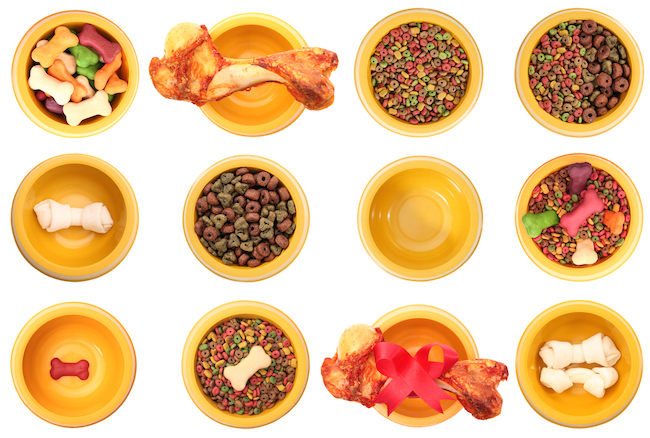
Watching a pet suffer through the uncomfortable symptoms associated with food allergies can be very discouraging. Since dogs and cats may be affected by various kinds of non-food allergies and seemingly incalculable potential food allergies, it can be difficult to know how to solve the problem. Pet owners may begin by determining if the pet has an allergy, by making initial amendments to the dog or cat’s diet.
First start by exchanging the pet’s regular food products for high-quality, hypoallergenic foods. If the cat or dog continues to experience the unfortunate side effects of the allergies, consider taking your pet to the vet for a professional insight and an official diagnosis. A veterinarian will be able to rule out other possible causes for your pet’s symptoms (such as respiratory issues, illness, stress, behavioral disorders, etc.), and help you determine which ingredients may be causing the food allergy.
Methods of Diagnosis
If the vet can confirm that the cat or dog is fighting a nutrition-based allergy, the most effective way to identify what the element is, would be to undergo an initial process of elimination, followed by a food trial with your pet.
Process of isolation and elimination: By isolating the specific things that your pet could be triggered by, a vet is able to determine the source of the allergy. This method takes certain kinds of foods from the diet and removes the ingredients one by one, until the culprit product may be identified. Pet parents might first begin with a hypoallergenic diet, or a starch-free diet to see if grains and starches were causing the problem, or a raw food diet, or diary-free diet to see if the problems persist. Should this prove indeterminate, the vet may order a food challenge or food trial.
Food challenge: Removing all the “complicated” ingredients from your cat or dog’s diet is a helpful way to identify the harmful elements. Vets usually prescribe food trials that last between 9-12 weeks, requiring a cat or dog to eat a combination of only two ingredients, such as: turkey and yams, or rabbit and brown rice, etc. If the pet’s symptoms go away on a rice and rabbit diet, the owner may add fish for two weeks. If the pet remains fine with the fish, the pet owner could add in beef for two weeks, and continue this way until the symptoms reappear when certain foods are added.
However, in order to be maximally effective, the animal should be disabled from eating any treats, chews, medications or supplements during the process. Eating this kind of clean diet will also help protect the pet from any contaminants that the mainstream food products he once used might contain.
When practicing a food trial, avoid giving your pet these products:
- Table scraps (including any sauces on the meat you feed the cat or dog).
- Rawhides
- Pig Ears
- Cow Hooves
- Pet treats
- Flavored chew toys
- Dental chews
- Flavored toothpastes (These are often swallowed in the brushing process. It would be much better to brush the pet’s teeth with baking soda during a food trial).
Remember, it might not just be the primary source of nutrition or treats that is causing the upset tummy and hives. If you have given your pet any supplements, topical skin oils, shampoos, or vitamins, medicines, these could have been the cause for your pet’s allergies as well.
Further Tips
- Expert pet nutritionists advise rotating pet food products to keep an animal’s diet balanced, once the food trial is over. By feeding a variation of quality dry foods, canned foods, raw food products, supplements and vitamins, the animal will stay fortified and have a much lower likelihood of developing allergies to a specific product or ingredient.
- If your pet seems to respond negatively to the mainstream kinds of proteins and starches, consider switching out chicken for proteins like kangaroo or venison, and the corn or wheat for oatmeal or lentils.
- Instead of using regular dog or cat treats, avoid inflammatory ingredients, but simply freeze their favorite meat option, and use this as a reward.

